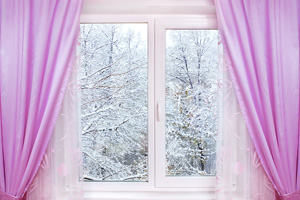Our companies are backed by the Best Pick Guarantee. Call one today!
With colder temperatures having settled in for the next few months, your home’s heating system is probably hard at work. Keep the cold at bay and your heater running as well as possible with these handy, energy-efficient heating tips.
Basic Heating System Maintenance Tips
A full HVAC checkup should be done twice a year—once in the spring and again in the fall—by a qualified heating and air technician. In the meantime, however, there are several steps that homeowners can take to quickly ensure that their heating system is functioning efficiently.
Check connections. Regardless of the type of heating system in your home, loose connections can cause a loss of efficiency on top of the danger that they pose. Give your furnace or heat pump a thorough inspection to make sure that any electrical or fuel connectors are tight and in good shape.
Look for cracks or damage. Homeowners who have gas furnaces should pay special attention during their visual inspection of the unit. A cracked heat exchanger is an indication that the furnace is not operating at full efficiency, and there is a possibility that carbon monoxide gas could enter the home.
Change filters regularly. This easy-to-forget step is vital to the efficient operation of your heating system. Dirty filters don’t allow air to flow freely, so your heater could be working overtime. Follow the manufacturer’s recommendations for the lifespan of your furnace filter for optimal airflow.
Energy-Efficient Heating Tips
If you’d like to save a bit on heating costs in addition to ensuring the safe operation of your heating system, there are a few additional points to remember.

Watch the thermostat. Everyone wants their home to be comfortable, but to save money on winter utility bills, try to keep the thermostat set as low as possible without sacrificing comfort—the California Energy Commission’s Consumer Energy Center recommends 68 degrees Fahrenheit. Remember rolling your eyes when your mother told you to put on a sweater after you complained of the house being freezing cold? Well, now is the time to acknowledge her wisdom and put on a sweater before nudging the thermostat up.
Check your home’s insulation. Many homes—especially older homes—are under-insulated. The attic, if your home has one, is a good starting point when assessing where more insulation might be needed, but don’t forget to check windows and doors, too. Rubber or synthetic seals and weather stripping don’t last forever, so if they have started to disintegrate around your home’s windows and doors, you could be losing a significant amount of heat. Many HVAC and insulation contractors perform home energy audits that can give you an accurate assessment of what can be done to improve your home’s energy efficiency.

Use the sun to your advantage. Keep blinds and curtains open on sunny days to let the sunlight warm your home. In the winter, south-facing windows will get the most sun. This method of passive heating is a free way to help prevent your heating system from working harder than necessary and causing unusually high utility bills. Close the blinds or curtains at night to help insulate the room and keep the warm air from escaping.
Heating your home in the winter doesn’t have to cost an arm and a leg. Combining basic system maintenance with steps for maximum energy efficiency will keep your home’s heating system in tip-top shape.


























